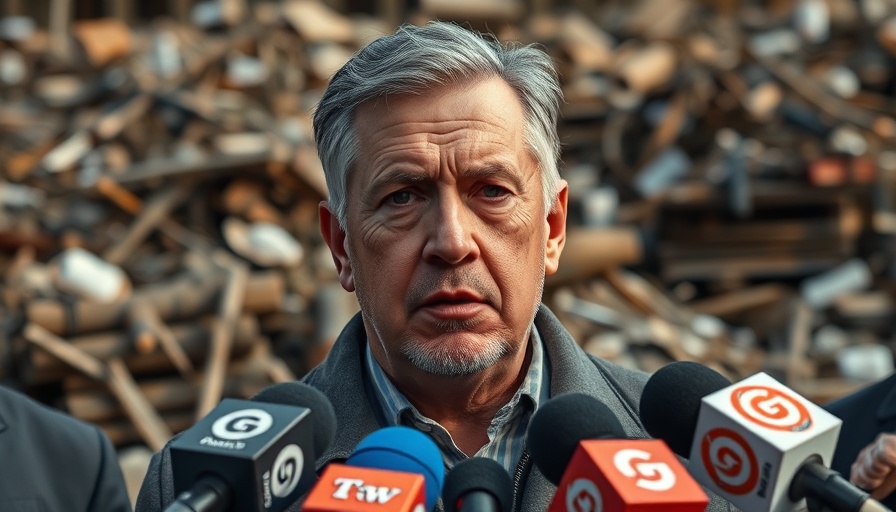
Netanyahu's Washington Visit: The Stakes Are High
As the world’s gaze shifts to Washington, Israeli Prime Minister Benjamin Netanyahu is preparing for a crucial meeting with President Trump. This meeting comes at a pivotal time, following the end of a significant conflict with Iran and amidst an ongoing war in Gaza. Analysts suggest that this meeting, Netanyahu's third since Trump returned to office, functions as a political booster for the embattled Prime Minister as he heads into an election year.
Context of Conflict: Israel's Recent Struggles
Netanyahu's visit is underscored by his government’s track record in managing not just external threats but also internal political pressures. The recent 12-day conflict with Iran over its nuclear ambitions has left Israel reeling. As tensions ebb, Netanyahu’s leadership in seeking resolutions to ongoing conflicts is under scrutiny. While previous efforts, including military assaults, may have galvanized support temporarily, the long-term outlook is uncertain, especially regarding the volatile situation in Gaza.
Understanding the Gaza Crisis: A Complicated Landscape
The current war with Hamas, triggered by the October 7th attack on Israel, reflects a deep-seated enmity that has roots in historical grievances and geopolitical complexities. President Trump’s push for a cease-fire aims to bring resolution to this long-standing issue, with hopes that it will facilitate the release of hostages held by Hamas. However, the intricacies of negotiating with such an entrenched foe present a formidable challenge.
Regional Implications: Broader Effects of U.S. Involvement
In addition to the crisis in Gaza, the United States is reportedly involved in brokering talks between Israel and Syria. This involvement showcases U.S. interests in maintaining stability in an increasingly complex Middle Eastern landscape. Events in Israel and Gaza don’t exist in isolation; they are part of a broader narrative that also includes Iranian influence and shifting alliances within the region.
Future Predictions: What Lies Ahead?
The discussions between Netanyahu and Trump may pave the way for a new approach to peace in the region, but skepticism remains high. Previous attempts at securing lasting cease-fires often fell apart, and both leaders will need to craft solutions that address not only immediate concerns but also the underlying issues fueling conflict. The international community will be watching closely, noting whether Trump’s administration can leverage its influence to achieve a breakthrough.
Voices from the Ground: Human Perspectives
While high-level discussions take place, civilians on both sides of the conflict are feeling the most immediate effects. Families in Gaza endure constant fear and uncertainty, while Israelis live with the aftermath of rocket attacks. Understanding their stories is essential, as the human impact of these wars often falls to the wayside in geopolitical dialogues.
Emphasis on Broad Perspectives: Local and Global
This situation extends beyond just Israeli and Palestinian lives; it encompasses a global audience that is deeply invested in the outcomes. International reactions to these discussions will ripple back, influencing public opinion and government policy worldwide. Critical voices from activists, diplomats, and citizens alike are integral in ensuring that any agreements put forth reflect a collective desire for peace rather than merely political expediency.
The Need for Action: A Collective Responsibility
While the world watches, the call for action is clear: fulfilling the promises of peace requires ongoing engagement from both leaders and the international community. A cease-fire in Gaza represents a critical first step, but it must lead to comprehensive dialogues addressing the myriad issues at play. With heightened awareness comes the opportunity to foster lasting change.
 Add Row
Add Row  Add
Add 




 Add Row
Add Row  Add
Add 

Write A Comment